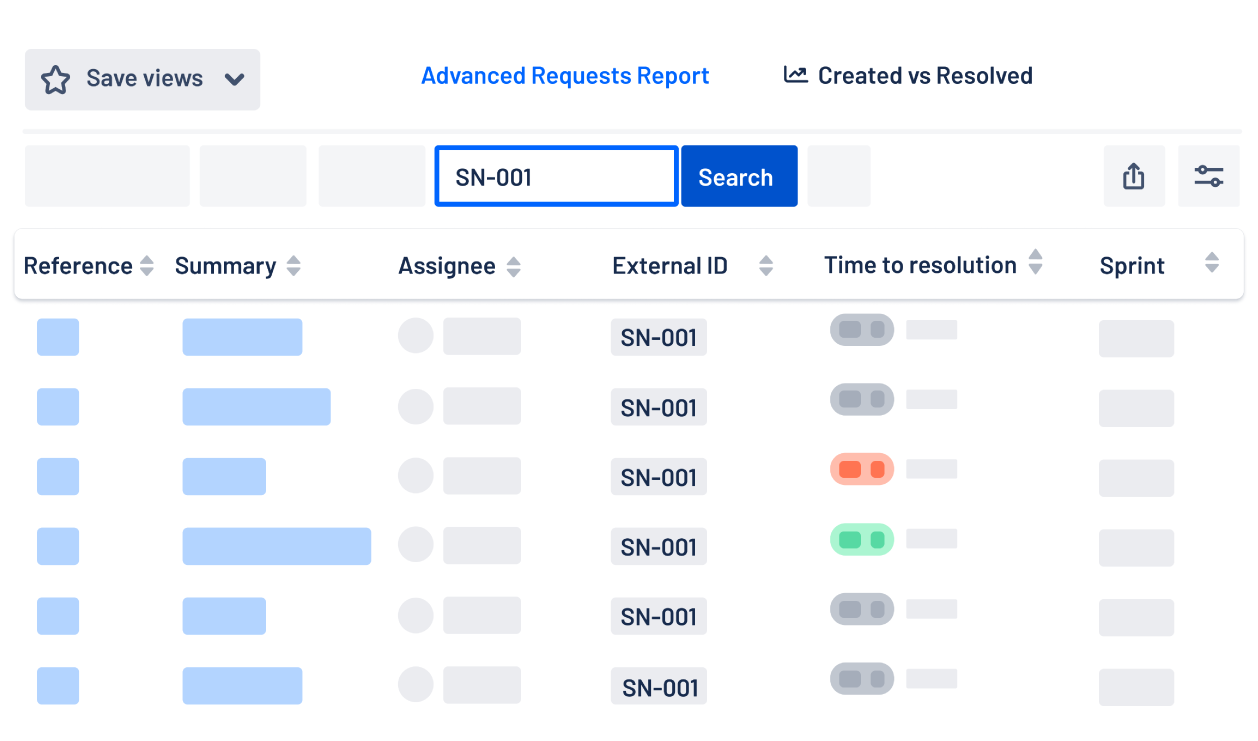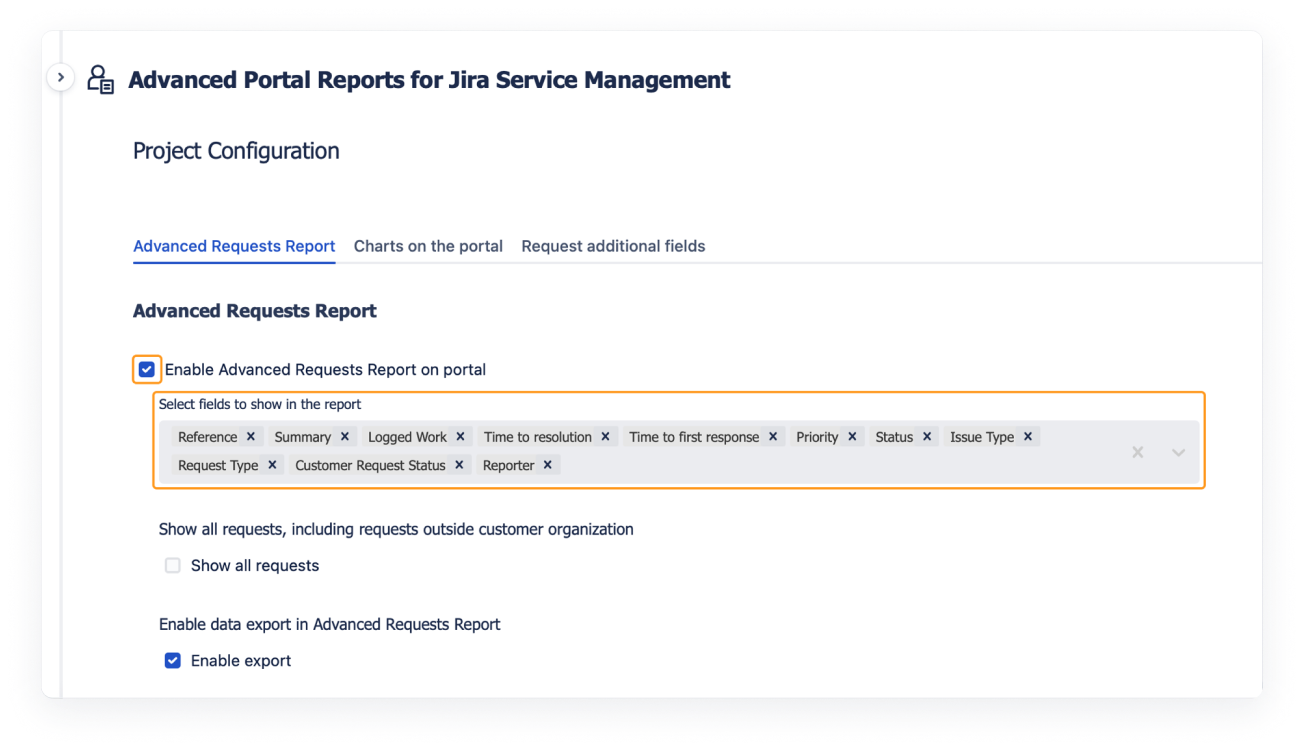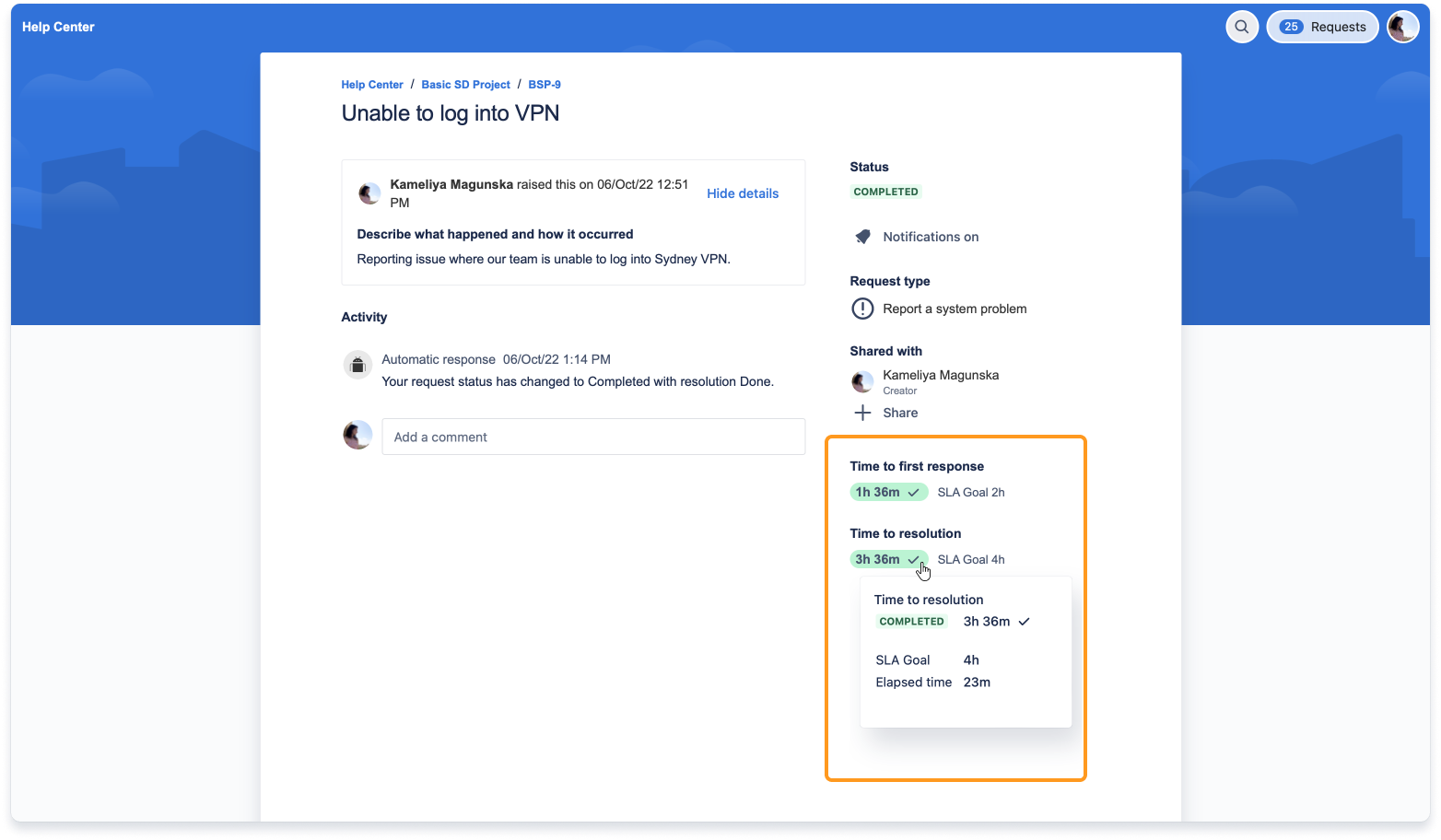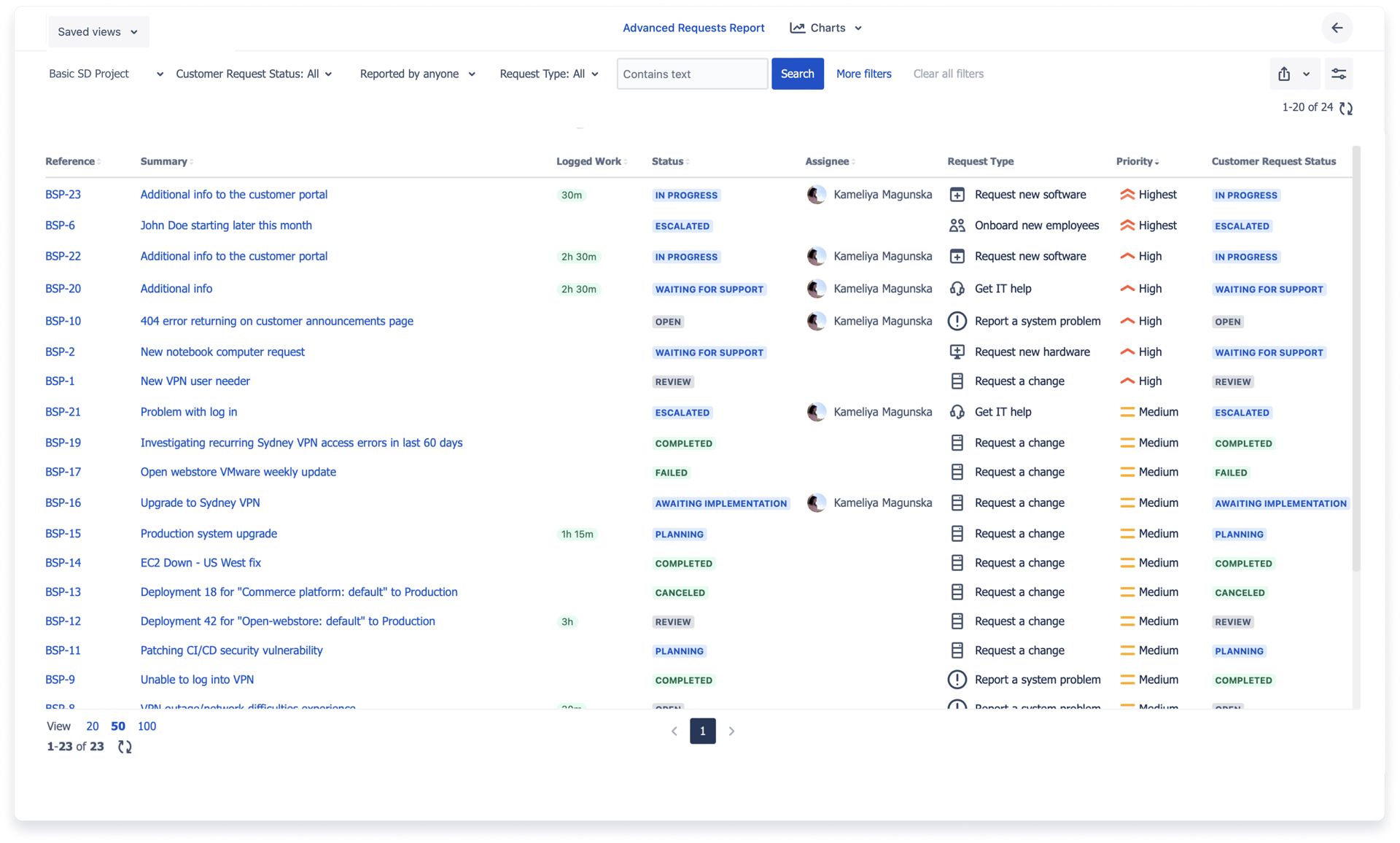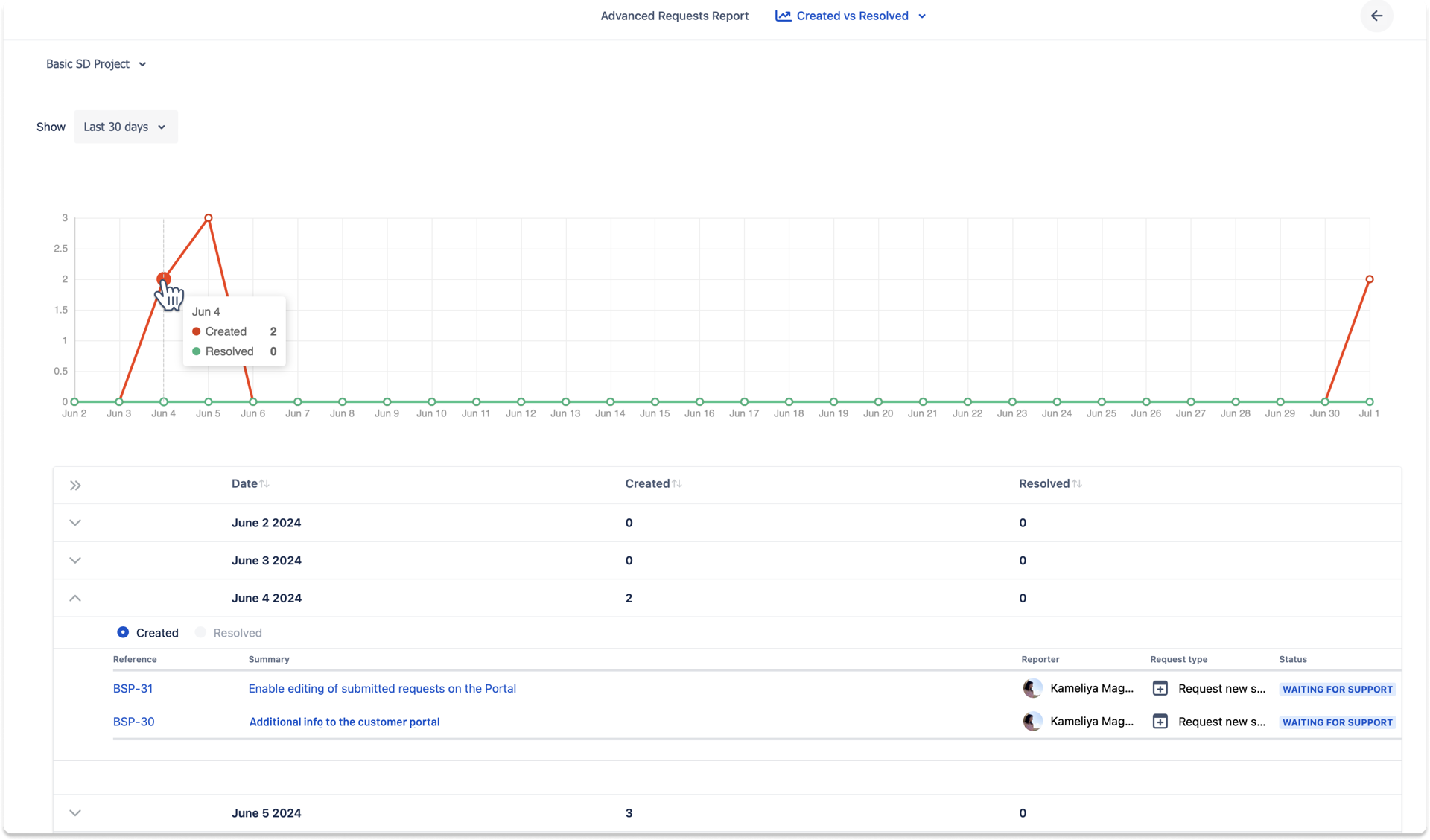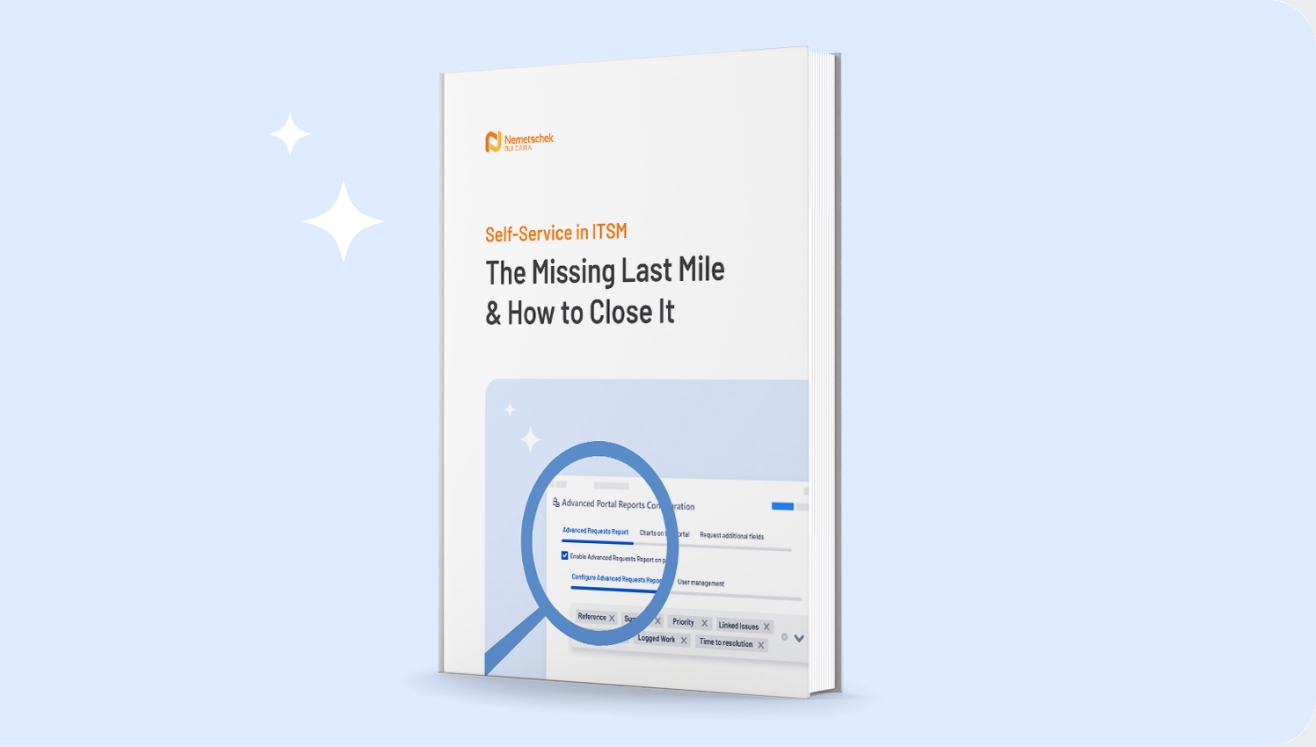Think your ITSM self-service strategy is working? It probably isn't—and not for the reasons you think. While most IT teams focus on deflection tools like chatbots and knowledge bases, the real failure happens after a request is submitted.
Portal users can see basic status updates but lack access to the rich operational data they need for effective self-service: detailed SLA metrics, custom field values, comprehensive filtering across requests, and exportable reports for team oversight.
Without this deeper layer of visibility, teams still rely on agents for reporting, tracking, and detailed insights; which defeats the efficiency gains self-service should deliver.
This is the "missing last mile" of self-service. In this guide, we'll explore why comprehensive resolution transparency is critical and how to close the gap for good.
Chapter 1
Self-Service Isn’t Failing
Because of Your Chatbot
Your Jira Service Management (JSM) portal deflects cases effectively. Chatbots answer routine questions. Knowledge bases resolve common issues before they become tickets. So why are your agents still drowning in reporting requests and detailed status inquiries?
Here's the uncomfortable truth: your self-service strategy stops working post-submission where portal users can access basic ticket status information but lack the rich operational data needed for effective self-service.
While JSM shows basic details like status and assignee, portal users still can't access detailed SLA metrics with time remaining, custom field values, advanced filtering across multiple requests, or exportable reports for team oversight.
On the other hand, agents (aka those with full Jira licenses) have complete access to all ticket data, custom fields, and reporting capabilities. Portal users operate with limited visibility on operational data that drives real transparency and accountability.
When portal users can't generate detailed reports or track comprehensive metrics independently, they default to requesting this information from agents. This creates exactly the dependency self-service was designed to eliminate.
This "last-mile gap" between basic status visibility and comprehensive operational transparency is where self-service actually fails. Not at the chatbot level. The failure occurs when organizations assume basic deflection equals complete self-service, when portal users actually need rich data access for true independence.
